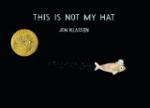|
This section contains 6,312 words (approx. 22 pages at 300 words per page) |

|
SOURCE: "Wordsworth, Fairy Tales, and the Politics of Children's Reading," in Romanticism and Children's Literature in Nineteenth-Century England, edited by James Holt McGavran, Jr., The University of Georgia Press, 1991, pp. 34-53.
In the following essay, Richardson refutes the argument, maintained by most critics of children's literature, that fairy tales were a liberal rejection of didactic literature; using Wordsworth and other Romantics as his evidence, he asserts that fairy tales could be socially conservative.
In his Miscellanies (1696) John Aubrey records a late sighting of an English fairy: "Anno 1670, not far from Cyrencester, was an Apparition: Being demanded, whether a good Spirit, or a bad? returned no answer, but disappeared with a curious Perfume and a melodious Twang. Mr. W. Lily believes it was a Fairie" (50). With this decorous exit, the fairies seem to have left England both in person and, largely, by reputation, thanks in part (as Aubrey elsewhere...
|
This section contains 6,312 words (approx. 22 pages at 300 words per page) |

|


